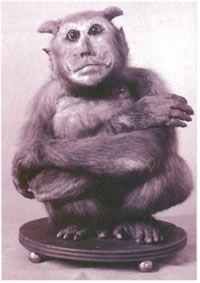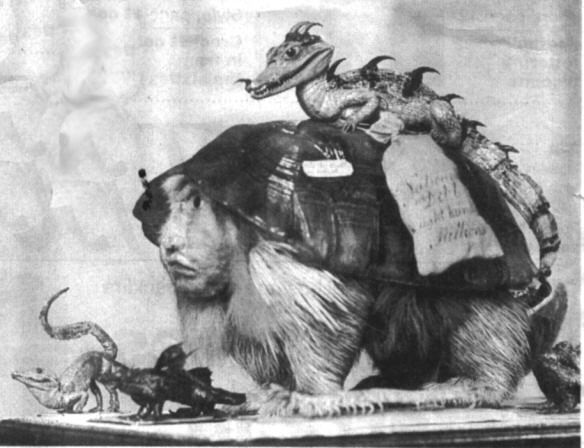 |
| "Nondescript". Image credit ridiculouslyinteresting.com. |
The most famous of Waterton's creations is the "Nondescript", pictured above. According to Waterton's Wanderings in South America, he had shot and killed the large, monkey-like animal in the jungles of Guiana, but could only bring the creature's head back to England.
Although Waterton claimed the Nondescript was a real animal, zoologists who examined the specimen determined that it was actually the heavily manipulated hindquarters of a howler monkey. Furthermore, the face of the animal is said to bear resemblance to a customs inspector named Lushington, who had forced Waterton to pay higher-than-average import taxes three years prior. In an act of humourous revenge, Waterton had turned a monkey's backside into the man's own face.
 |
| "Martin Luther After His Fall". Image credit wakefield.gov.uk. |
 |
| "John Bull". Image credit neatorama.com. |
All three of these creatures can still be seen, along with many of Waterton's other creations, in Wakefield Museum, Yorkshire. Waterton's specimens are so well-preserved because he created his own method for preserving them. He has also been praised by Sir David Attenborough, who officially opened Wakefield Museum.

No comments:
Post a Comment